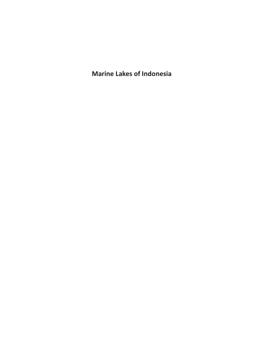2012-12-04
Marine Lakes of Indonesia
Publication
Publication
The objective of this thesis was to obtain insight into the processes that play a role in biodiversity patterns of tropical marine species by using marine lakes as a model. Marine lakes are landlocked water bodies that maintain a marine character through narrow submarine connections to the sea. Two regions in Indonesia were studied: Berau (East Kalimantan) and Raja Ampat (West Papua). The following questions were addressed: 1. What are the different types of marine lakes in Indonesia? 2. Are the species assemblages in marine lakes distinct from those in the adjacent coastal environments? 3. To what extent are the populations in the lakes isolated? 4. Can marine lakes in Indonesia be considered natural laboratories of evolution? There is a large diversity in types of marine lakes and many more remain to be documented in Indonesia. The spatial variation in sponge species composition in marine lakes, coastal mangroves and coral reefs show that marine lakes contain three groups of sponge species: (a) widespread species known from various locations in Indo-Pacific reefs, (b) lake species that only occur in lake systems, (c) endemic species restricted to a single lake. The patterns of genetic variation found in the marine lake populations are generally consistent with populations in isolated environments. The lakes appear to be both cradles and refuges of diversity
| Additional Metadata | |
|---|---|
| Released under the CC-BY 4.0 (“Attribution 4.0 International”) License | |
| Organisation | Staff publications |
|
Becking, L. (2012, December 4). Marine Lakes of Indonesia. |
|
